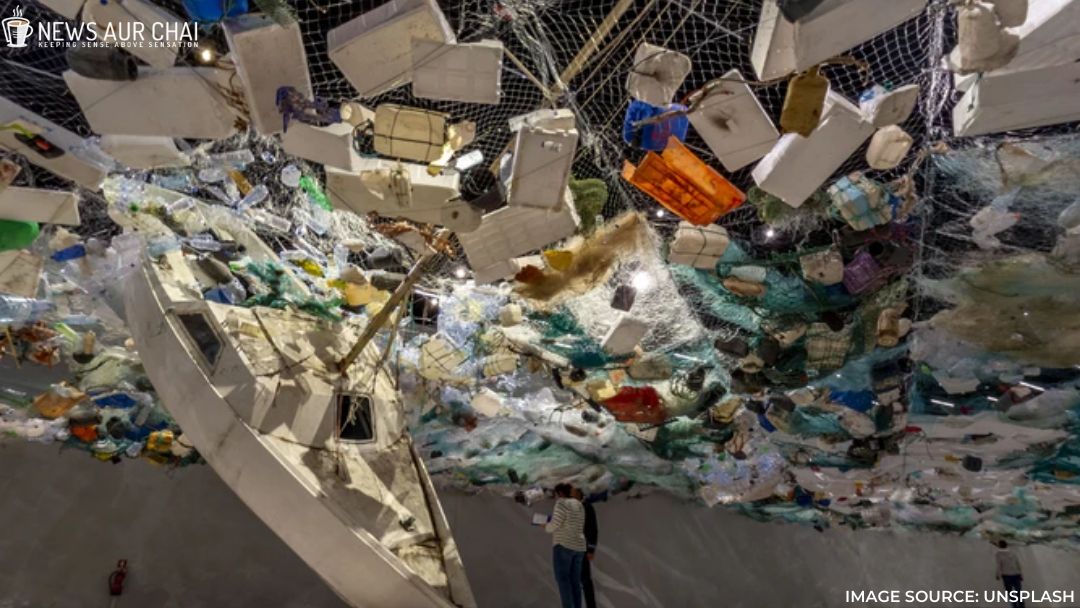
For over a few decades now, the emergence and extensive usage of plastic have enveloped the modern society and its budding business. Beyond a shadow of a doubt, plastic is a crucial part of the economy and the business as it has made the packaging of the products immensely convenient.
However, the convenience of packaging products by the inexpensive single-use plastic and low recycling rates has traversed into a massive global plastic pollution crisis. The used plastic usually finds its way to the oceans, rivers, streets, adding to the already disrupted environment.
In the wake of the crisis, multiple efforts have been made by the government to regulate the use of the plastic; however, the lack of economic alternatives has led the efforts to go in vain.
We need to first get rid of the nucleus of the plastic waste problem, i.e., the ‘take-make-dispose’ model of consumption, wherein the products are manufactured, bought, used, and disposed of instantly.
The current value chain of the plastic packaging is highly unsustainable wherein just 14 per cent of the plastic packaging used globally reaches the recycling units, and only 9 per cent is recycled – while a third is disposed of in the ecosystems directly, and 40 per cent ends up in landfills. The plastic packaging waste represents an 80–120 billion dollars loss to the global economy every year, according to the World Economic Forum.
The deteriorating impacts of plastic have led the plastic packaging stakeholders standstill at the crossroad in determining plastic’s role within society and its hazardous effect on the environment.
The questions which arise instantly is how to ensure sustainable production, consumption and disposal of plastic used in packaging? And how to inculcate a restorative and regenerative approach amongst the packaging industry, NGOs, policymakers and stakeholders involved in its design and advocacy?
The New Plastic Economy renders a robust conception for the global plastics system that works on a Circular Economy for plastics. A circular economy means that the plastic materials will uniformly circulate around a ‘closed-loop’ in the system only, rather than being in ‘one-time-use’ and then dumped.
Ellen MacArthur Foundation leads the crusade for a New Plastics Economy Global Commitment Foundation in collaboration with the UN Environment Program who are diligently working towards a plastics circular economy with zero plastic waste.
The goals of the initiative entail ‘Eliminating unnecessary plastic,’ ‘sustainable innovation,’ and ‘circulating plastic.’ There are more than 450 global partner companies namely, Apple, Walmart, PepsiCo, Nestle, the Coca-Cola Company, Danone, Mondelez, Mars, Unilever, Johnson and Johnson and SC Johnson – representing 20 per cent of global plastic packaging, with the end goal of 100 per cent reusable, recyclable or compostable plastic packaging by the year 2025.
Governments, NGOs, universities, industry associations, and investors are also represented in the partner companies and are the renowned signatories of the initiative.
The New Circular Economy will enable sustainable Plastic designing and packaging, which will facilitate the active process of 3Rs – Reduce, Reuse, Recycle; hence, less plastic exposed to the environment. The sustainable method will also contribute towards the UN Sustainable Development Goal on Sustainable Consumption and Production (SDG 12). It also contributes to achieving (SDG 14), Life on Water, through target 14.1 on preventing and reducing marine pollution of all kinds.
The collaborative efforts of the government, corporate conglomerates, NGOs revisiting the existing policy, driving a systemic change at the industry level, erecting the required infrastructure to collect and recycle materials can facilitate the creation of a circular economy through an exploration of innovative business models.





